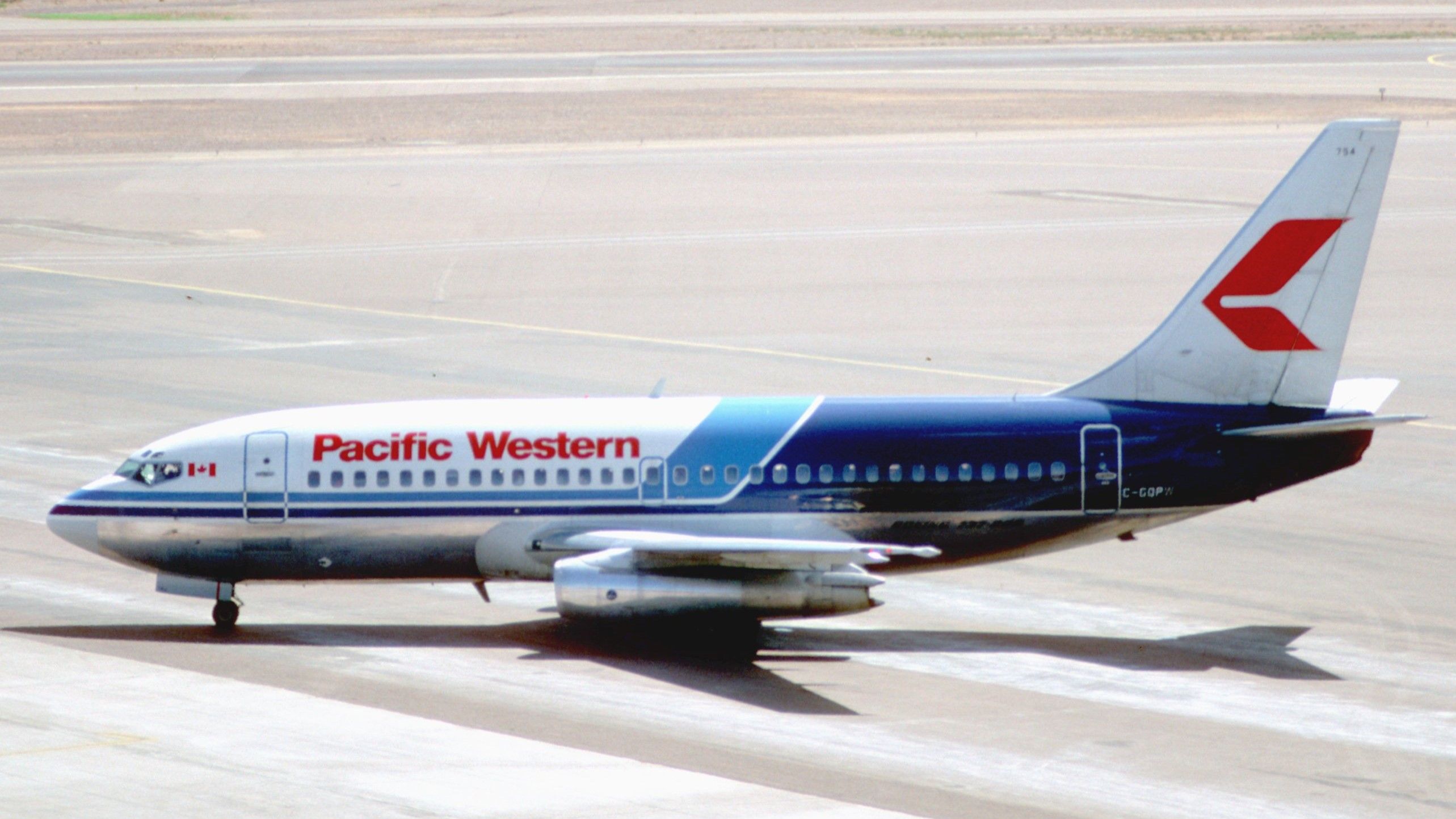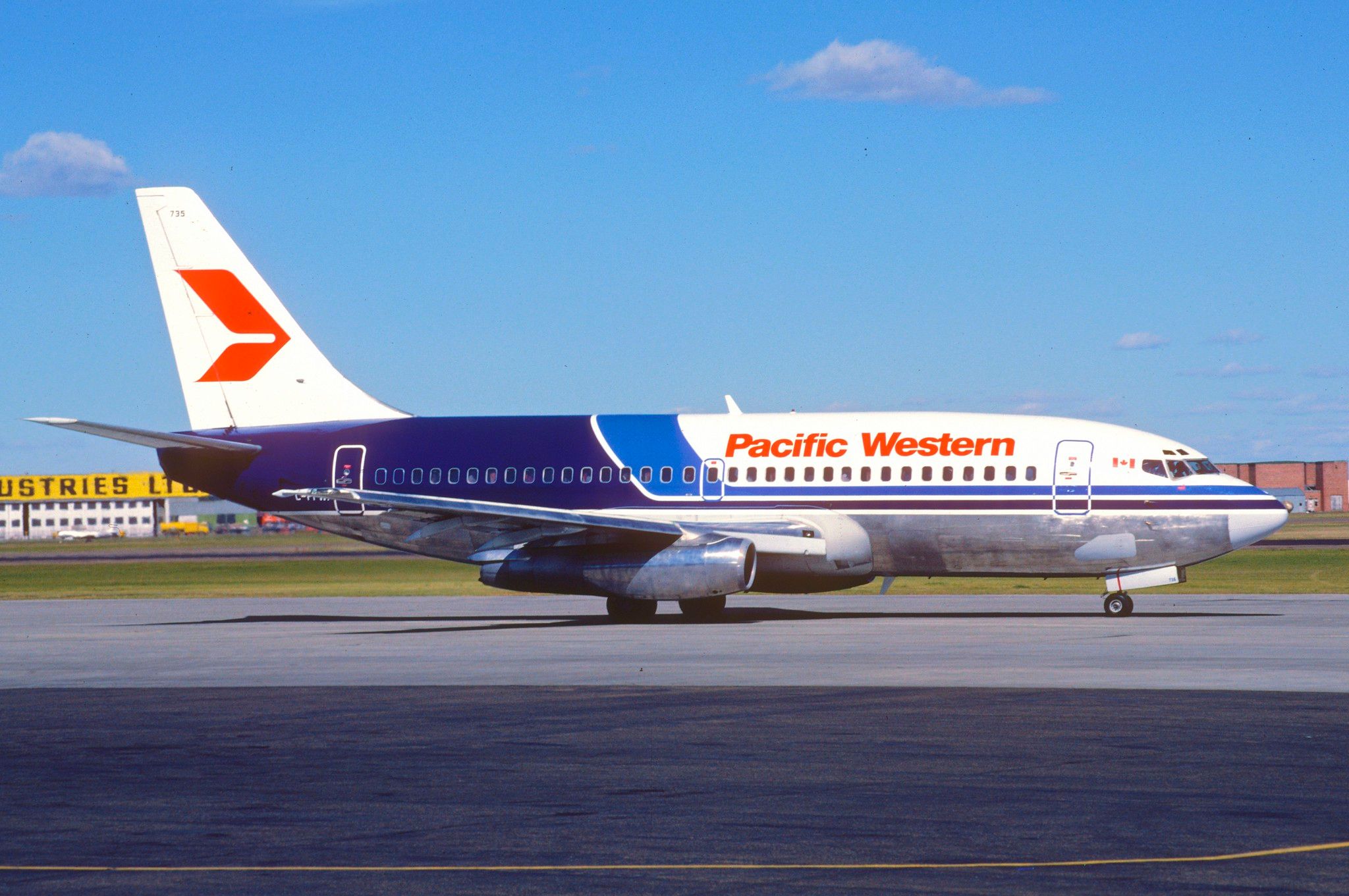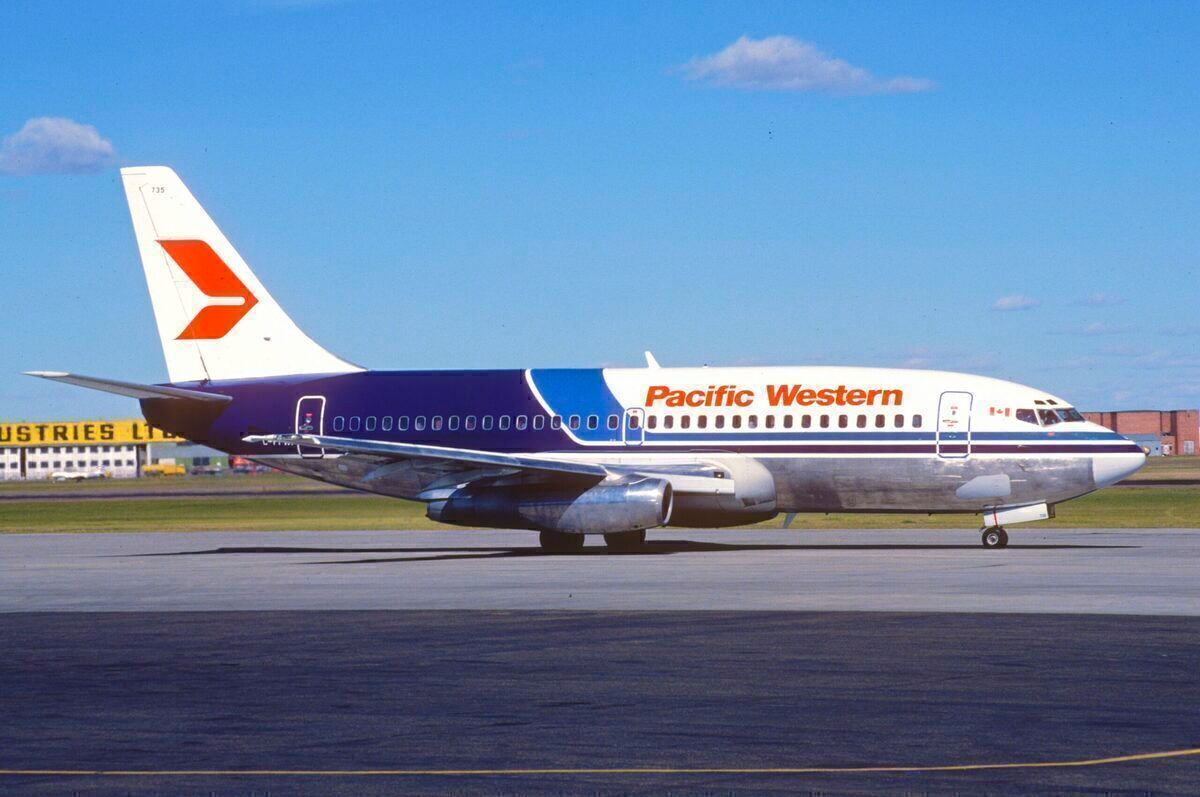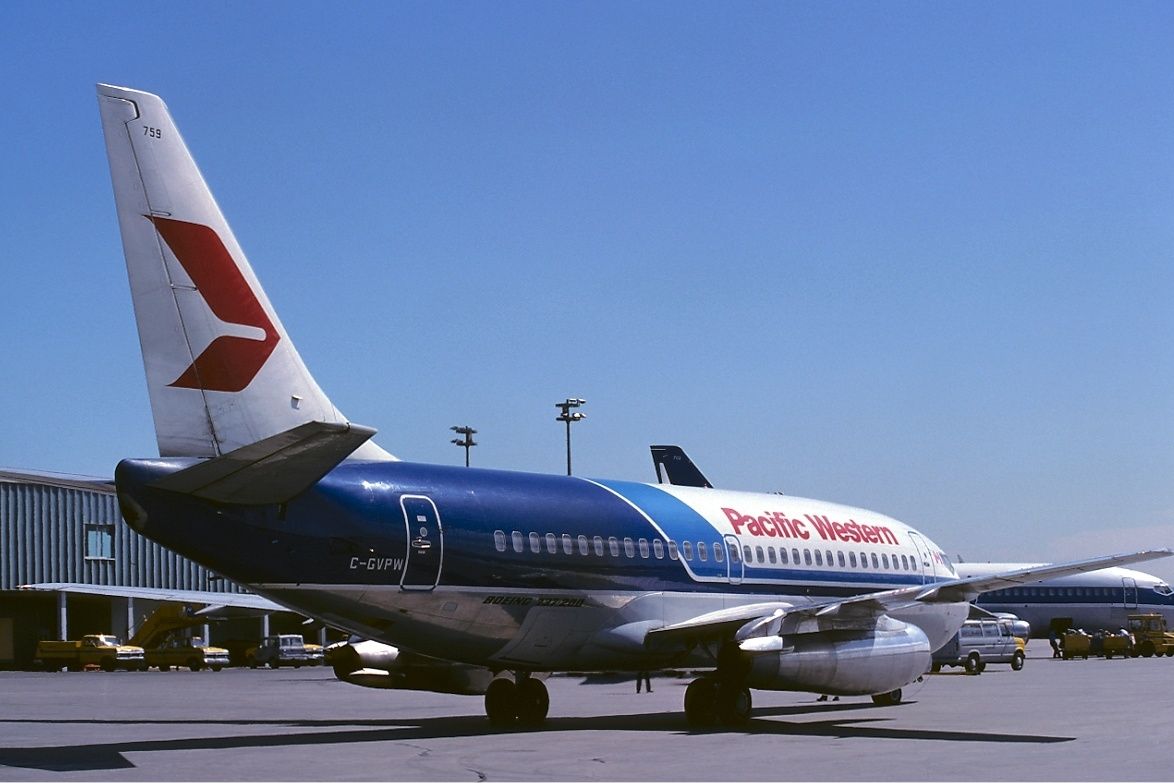This month marks four decades since the occupants of Pacific Western Airlines flight 501 experienced a narrow escape from a burning jet. The flight, operated by a Boeing 737-200, stopped on a taxiway in Calgary after aborting its takeoff, with fire eventually consuming the aircraft. Thankfully, all of the service's occupants survived, although some were injured. Let's take a look back in time and examine the story.
The flight in question
Pacific Western Airlines flight 501 was a scheduled domestic flight that originated at Calgary International Airport (YYC) in the Canadian province of Alberta. After its relocation from Vancouver International Airport (YVR) in Richmond, British Columbia, in 1974, Calgary also served as the carrier's headquarters. The city stayed as Pacific Western Airlines' HQ until it ceased operations 13 years later, in 1987.
The flight's destination was another Albertan location, namely Edmonton International Airport (YEG). This facility lies almost directly to the north of Calgary International Airport, with the pair separated by around 300 kilometers (equivalent to 162 NM or 186.4 miles). On March 22nd, 1984, 114 passengers and five crew members were onboard the flight, according to the Aviation Safety Network.
Love aviation history? Discover more of our stories here!
Pacific Western Airlines flight 501 was an early morning departure, and the Aviation Safety Network notes that, on the day in question, it pushed back from the gate at 07:35 local time. Within seven minutes, it had begun its departure from what was then runway 34. This strip now bears the designation 17R/35L and is 3,863 meters (12,674 feet) long, making it Calgary International Airport's second-longest runway.
Fire on the taxiway
Looking to depart to the north for a direct path towards Edmonton, Pacific Western Airlines flight 501 commenced its takeoff from Calgary's runway 34 just seven minutes after commencing its pushback from the departure gate at 07:42 local time. However, after 20 seconds, at which point the Boeing 737-200 operating the plane was traveling at around 130 km/h (70 knots), the aircraft's pilots heard a bang.
Shortly afterward, the plane began to vibrate and veer to the left, causing the crew to suspect that one of the 737's tires had blown. Despite this, they were successfully able to abort the takeoff using the plane's brakes and reverse thrust. However, as the aircraft attempted to taxi off the runway, a fire that had broken out at the rear of the jet began to spread, suddenly making the situation more perilous.
96 seconds after rejecting the takeoff, the cockpit's fire warning bell sounded, which prompted the pilots, who had managed to steer the plane onto a taxiway, to order an evacuation. This took place 19 seconds later, at an elapsed time of one minute and 55 seconds. Thankfully, all 119 occupants of Pacific Western Airlines flight 501 managed to escape the burning jet, with 22 minor and five serious injuries.
Investigation and aftermath
Following the incident, an investigation by the Canadian Aviation Safety Board (CASB) found that it had, in fact, been caused by an uncontained engine failure. The Bureau of Aircraft Accidents Archives notes that this specifically affected the left engine's thirteenth-stage compressor disc, which had been catalyzed by fatigue over time. Debris from the failure then punctured a fuel cell, resulting in the fire.
According to historical data from ATDB.aero, the Boeing 737-200 involved (C-GQPW) was less than three years old, having been delivered in April 1981. Nonetheless, its damage resulted in its being written off. As for Pacific Western Airlines, the carrier purchased Canadian Pacific Airlines and Wardair in the late 1980s to form Canadian Airlines. This carrier was, itself, acquired by Air Canada in 2000.
What do you make of this incident? Can you remember it happening at the time? Let us know your thoughts and recollections in the comments.




